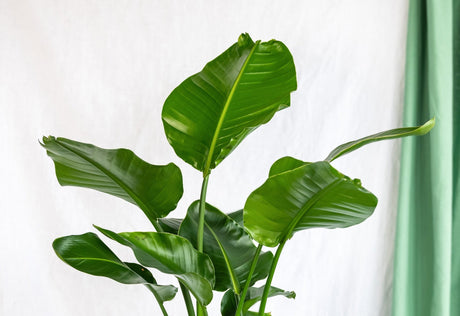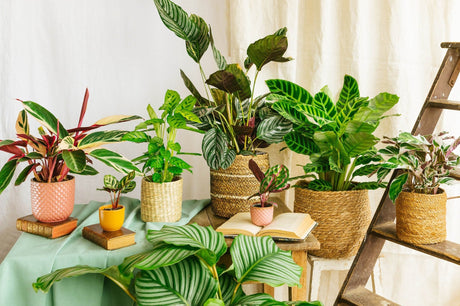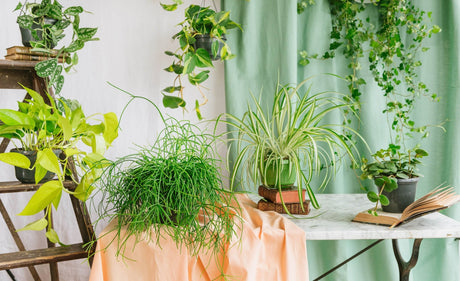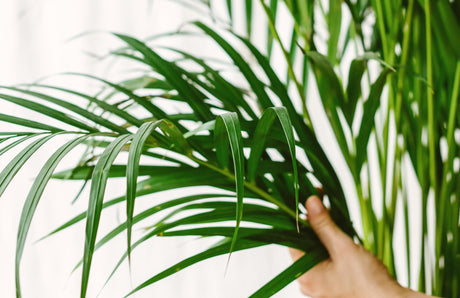Isolating and identifying the disease in your plant
We reassure you, the disease of a plant is not necessarily irremediable. First of all, when you realize that your plant is sick, it is important to keep it away from your other plants to avoid any risk of contamination. Afterwards, remember to check that you scrupulously respect the maintenance of your plants. If this is not the case, your plant may not be sick but its maintenance probably needs to be readjusted. We therefore advise you to check the maintenance sheet for your plant. You can also take a look at our infographic below to identify the problem.
Plant diseases, easy to identify
We have listed below the most common diseases that we find in plants. As well as our solutions to restore their health.
Oidium: a disease that affects many plants:
Do you notice a white powder on the leaves, flowers or stems of your plant? This is powdery mildew. This disease is provoked by insufficient watering and lack of air. It usually arrives in May during dry weather. In this case, remove the parts attacked by this white deposit and adjust your watering as well as the ventilation of your room.
Mildew: a gardener's nightmare:
Are you seeing brown spots on the leaves of your plants with mold, like white fuzz, on them? Your plant is then most likely affected by the mildew disease. If so, remove the affected leaves and stop spraying them. Indeed, the fungus can develop even more if the foliage is wet. You can also add garlic decoction to combat mildew (this technique also works against rust and aphids). This disease is very common in vegetable gardens where rain, humidity and mild temperatures favor its development.
Root Rot:
Drought or too much watering on your plant can cause its roots to rot. You notice at first that your roots blacken, to end up rotting completely. In this case, there is unfortunately no other solution than to throw away the contaminated plant.
Appearance of black spots:
You notice black and yellow spots on your foliage. Sometimes a few of your leaves break off and fall off. In this case, you will need to remove the stained sheets immediately to leave only those in good condition. Your room must lack ventilation, so remember to open your window from time to time to circulate more air.
Rust:
This disease mainly affects garden plants. You will see brown and orange spots on the lower part of the leaf as well as red spots on the upper part of the leaf. Too much watering (or rain) is the cause of this disease. To cure this infection, you can use natural fertilizer, in higher doses than usual.






